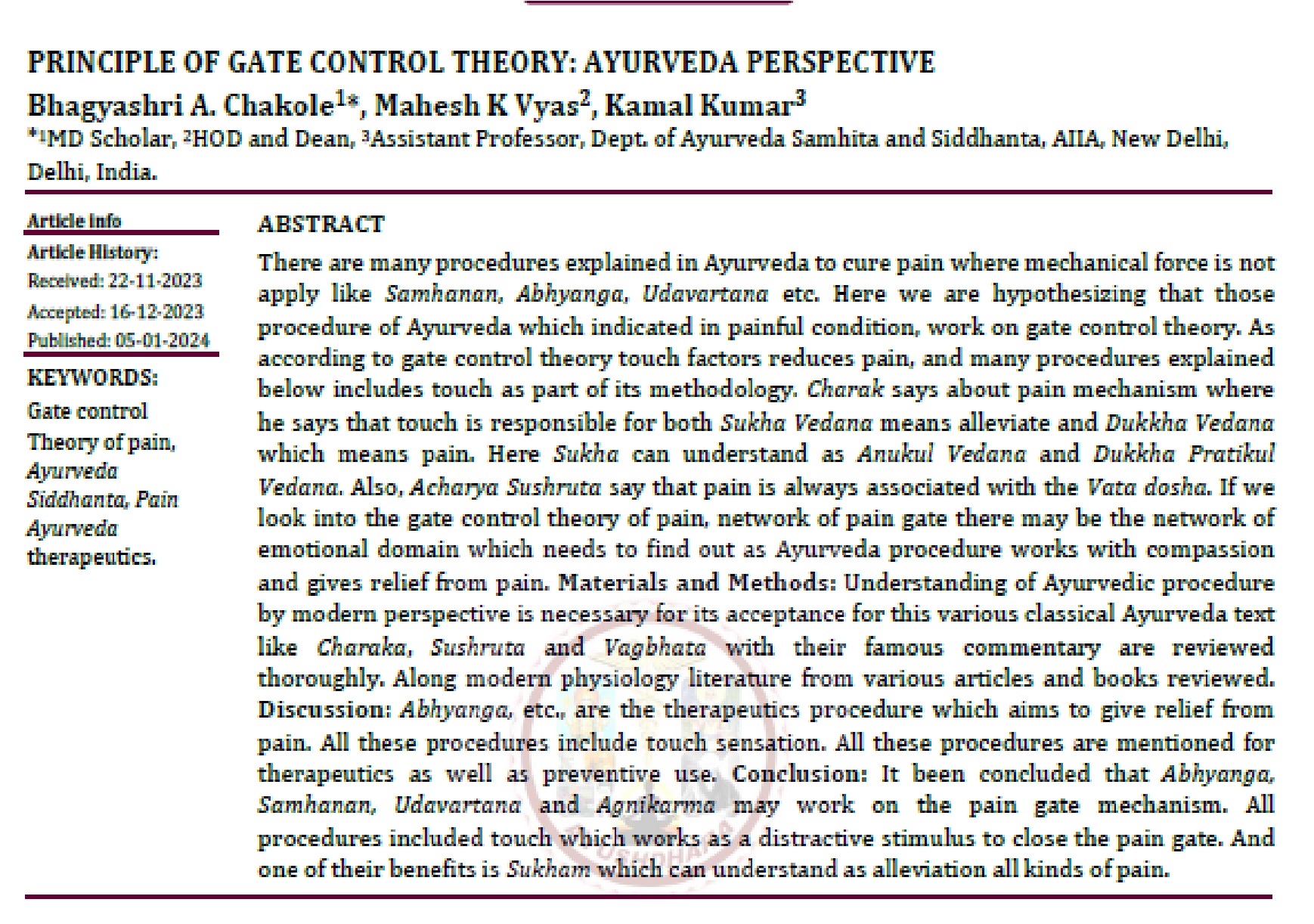Principle of Gate Control Theory: Ayurveda Perspective
DOI:
https://doi.org/10.47070/ayushdhara.v10i6.1293Keywords:
Gate control Theory of pain, Ayurveda Siddhanta, Pain Ayurveda therapeuticsAbstract
There are many procedures explained in Ayurveda to cure pain where mechanical force is not apply like Samhanan, Abhyanga, Udavartana etc. Here we are hypothesizing that those procedure of Ayurveda which indicated in painful condition, work on gate control theory. As according to gate control theory touch factors reduces pain, and many procedures explained below includes touch as part of its methodology. Charak says about pain mechanism where he says that touch is responsible for both Sukha Vedana means alleviate and Dukkha Vedana which means pain. Here Sukha can understand as Anukul Vedana and Dukkha Pratikul Vedana. Also, Acharya Sushruta say that pain is always associated with the Vata dosha. If we look into the gate control theory of pain, network of pain gate there may be the network of emotional domain which needs to find out as Ayurveda procedure works with compassion and gives relief from pain. Materials and Methods: Understanding of Ayurvedic procedure by modern perspective is necessary for its acceptance for this various classical Ayurveda text like Charaka, Sushruta and Vagbhata with their famous commentary are reviewed thoroughly. Along modern physiology literature from various articles and books reviewed. Discussion: Abhyanga, etc., are the therapeutics procedure which aims to give relief from pain. All these procedures include touch sensation. All these procedures are mentioned for therapeutics as well as preventive use. Conclusion: It been concluded that Abhyanga, Samhanan, Udavartana and Agnikarma may work on the pain gate mechanism. All procedures included touch which works as a distractive stimulus to close the pain gate. And one of their benefits is Sukham which can understand as alleviation all kinds of pain.
Downloads

Downloads
Published
Issue
Section
License
Copyright (c) 2023 AYUSHDHARA

This work is licensed under a Creative Commons Attribution-NonCommercial-ShareAlike 4.0 International License.


